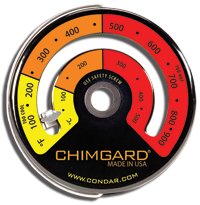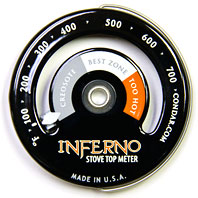I have been asking here for about a week regarding lower burn times. I resealed the doors with new gasket just to eliminate that and I installed a damper today to help with the strong draft on a 26' flue.
After working different positions on the damper I have found this has helped with the burn times considerably already. My question is about flue temps before and after the damper itself.
Since I did not have a flue thermometer I'll be making my way to pick one up shortly.
So, my apologies for the short timed request but my thoughts are about getting a decent overnight burn tonight. I'm using the stovetop therm on the stovepipe for now.
After working different positions on the damper I have found this has helped with the burn times considerably already. My question is about flue temps before and after the damper itself.
Since I did not have a flue thermometer I'll be making my way to pick one up shortly.
So, my apologies for the short timed request but my thoughts are about getting a decent overnight burn tonight. I'm using the stovetop therm on the stovepipe for now.




